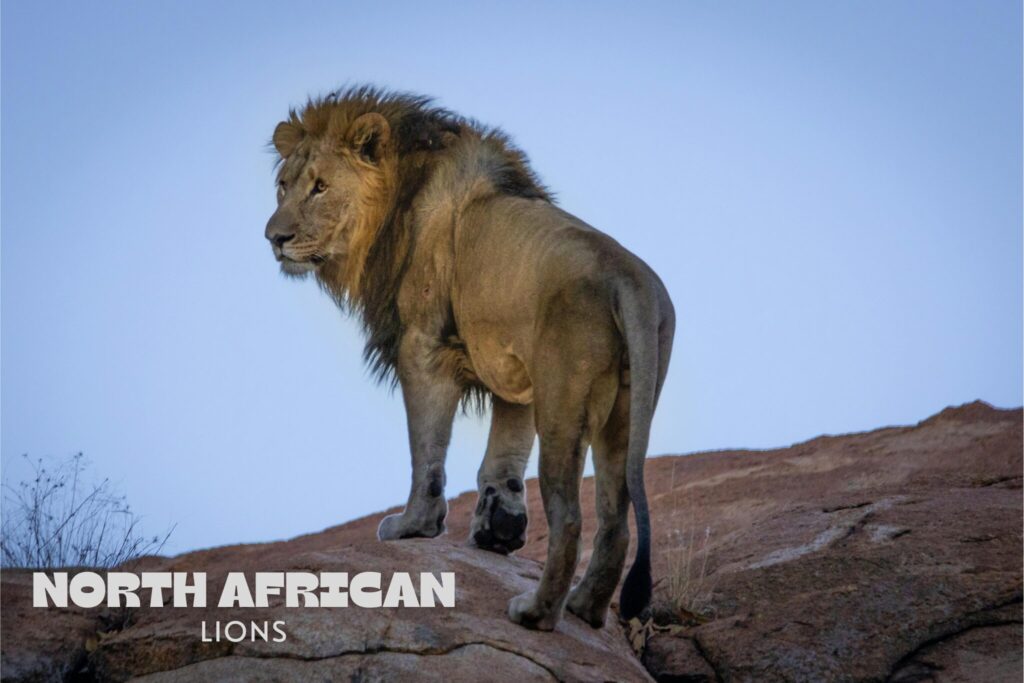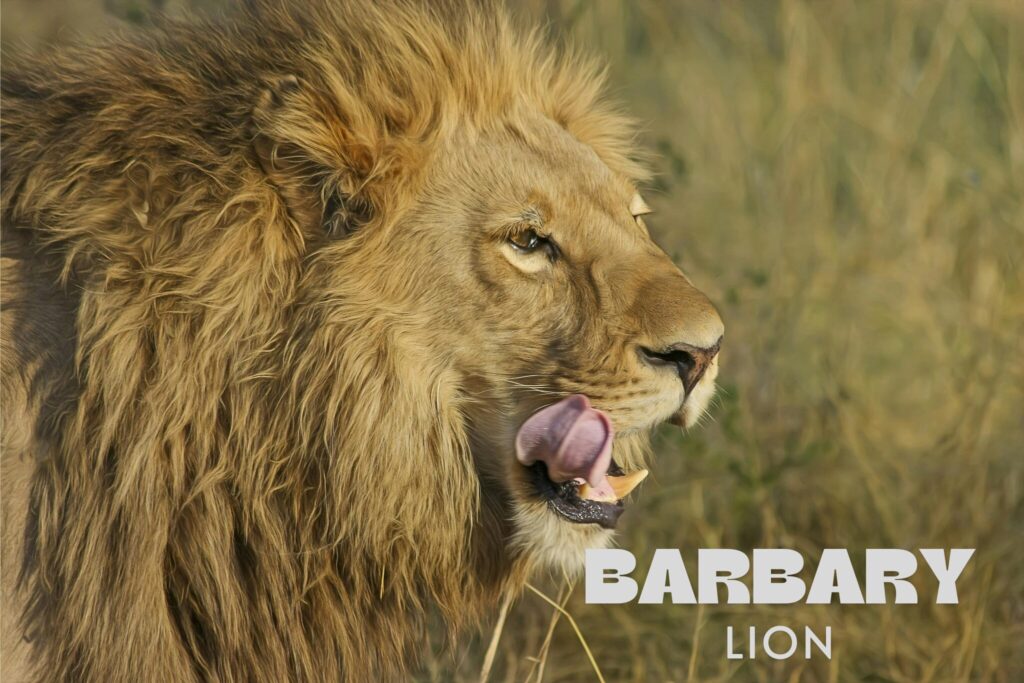
Introduction Of Barbary Lions
Within the animal kingdom, the Atlas lion, sometimes known as the lion, is a Great force. Let’s explore the beautiful world of this amazing cat species and learn more about its existence.
Origins of the Barbary Lion
The North African region, which consist of nations like Morocco, Algeria, Tunisia, and Libya, was once home to the Barbary lion. Ancient civilizations held these amazing animals in such high regard that they were even included in regal mark.
The Habitat of the Barbary Lion
The habitat of the lion is not just a geographical expanse but a testament to the complex relationship between wildlife and the environment. By understanding and protecting its habitat, we save the legacy of the lions for generations to come.
Size and Weight of the Barbary Lion
Male adult Barbary lions as usually measure between 9 and 10 feet in length from the tip of their nose to the end of their tail, making them famous for their huge size. These lions are quite tall, measuring between three and five feet at the shoulder, demonstrating their strong and muscular physique. One of the most characteristic of the Barbary Lion is its believe , which serves to emphasize the animal’s massive height . A male lion’s believe can stretch down his chest and abdomen, giving him a majestic and royal appearance. It ranges in hue from dark to light.
Geographic Range of the Barbary Lion
The Barbary lion’s geographical range includes a variety of environments, including fertile valleys, coastal plains, and the uncontrolled mountains of the Atlas Mountains. lions are able to flourish in their native environments because of the abundance of hunting and hiding places these Diverse ecosystems offer .Through interactions with other species, the Barbary lion contributed significantly to the environment within its range. Its presence avoided overgrazing, controlled grass populations, and preserved Environmental balance.
Behavior and Social Structure
Barbary lions were knowns for their impressive hunting skills and strong social bonds within their pride. Understanding their behavior can give us insights into how these magnificent animals lived in their natural habitat.
Hunting Behavior : lions were peak preditors and Great hunters. They exhibited strategic hunting techniques such as group stalking and integrated attacks to take down large prey like bulls and zebras. Their hunting Ability was a result of years of evolution and adaptation to their environment.
Barbary lions are knowns for their social nature, forming Compatible pride structures led by dominant males. These prides usually consist of related females and their cubs, which form the family unit necessary for hunting and protection.
Reproduction and Family Dynamics of the Barbary Lion
Mating Rituals: This Lion engages in in detail courtship rituals, where males roar to attract females and establish dominance. The process of mating is important for the survival of the species, as it makes sure genetic diversity within the population.
Pregnancy and Birth: Female lions are pregnant for about 110 days before giving birth to 2-4 cubs. Newborn babies are blind and completely dependent on their mother for bringing up and protection.
Parental Care: Both male and female lions play an important role in caring for their cubs. The mother provides milk and teaches hunting skills, while the father protects the pride and make sure the safety of the young.

Historical Decline of the Barbary Lion Population
Hunting: Historically, the Barbary Lion is a popular trophy for big game hunters. The demand for lion pelts and trophies led to a Important decrease in their population.
Human-Wildlife Conflict: As human populations Extension, conflict between humans and Barbary Lions increased. The loss of habitat and prey drove lions to raid livestock, leading to Retaliatory action killings by local communities.
Disease Outbreaks: Epidemic diseases such as canine Stress and Tuberculosis have broom through Lion populations, impacting their ability to survive and reproduce.
Conclusion
The lions has faced Multiple threats over the years, including hunting, habitat destruction, and conflicts with humans. Protectional organizations and governments have been working to protect and to save the remaining lion populations. Such as captive breeding programs, habitat restoration, and Poaching Actions have been put in place to to make sure the survival of this Endangered species.
FAQs
What is a Barbary Lion?
The Barbary Lion is known as the Atlas Lion or North African Lion .
How are Barbary lions different from other lion subspecies?
Lions were distinguished by their large stature, thick mane, and darker fur than other tiger subspecies. He was also known for his social behavior and proud build..
Why did the Barbary lion become extinct in the wild?
Wild lions face multiple challenges to their survival, such as habitat destruction, human encroachment, poaching, and persecution. These conditions, with the decline of hunting species, led to extinction in the jungle.
Are there any Barbary lions left in captivity?
Yes, lions are primarily housed in zoos and wildlife reserves around the world. These captive populations are frequently used in breeding operations designed to preserve the species’ genetic diversity. and 90 to 100 lion left in Zoo and Homes
Can the Barbary lion be reintroduced to the wild?
Efforts are continued to reintroduce captive race lions into protected areas, but they face multiple challenges such as , habitat appropriateness, human-wildlife conflict, and genetic viability. Successful reintroduction needs careful planning and protection efforts.
What is being done to protect the Barbary lion?
Protectional initiatives for lions include habitat protection, captive breeding programs, community involvement, and research to better understand their environment and behavior. These efforts are aimed at ensuring the long-term survival of the species.
How can I contribute to the conservation of the Barbary lion?
You can protect the lion by raising awareness, donating to leading protectional organizations, visiting certified zoos with lion exhibits, and advocating for policies that protect their habitat and prevent illegal trade.